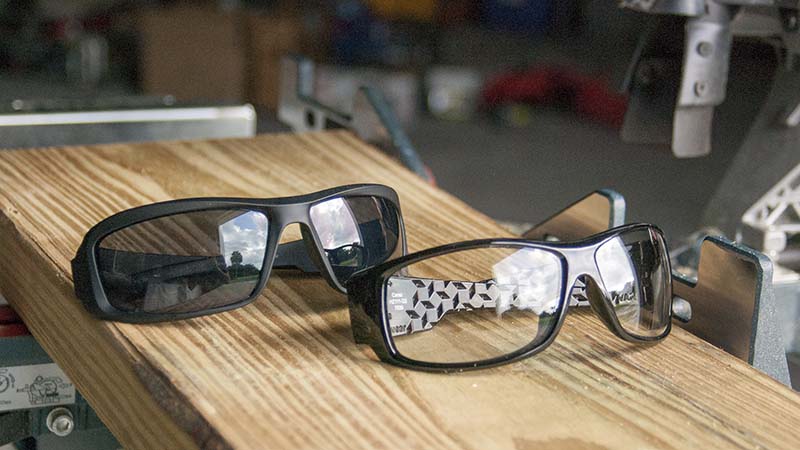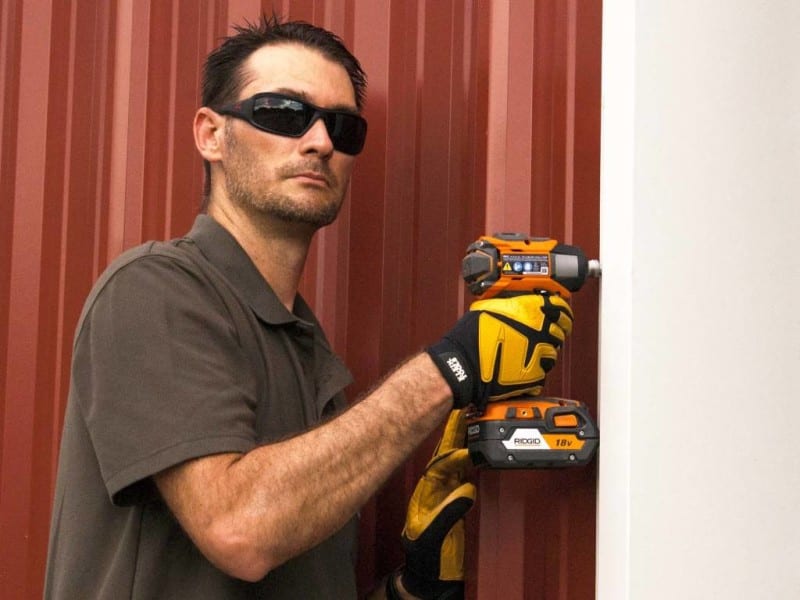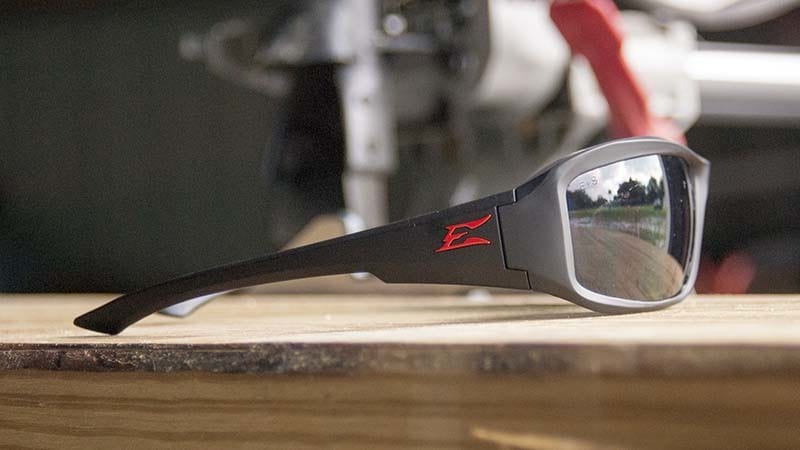No matter if you’re on an indoor or outdoor jobsite, eye protection is mandatory. This type of safety or construction PPE ranges from ANSI Z87.1-rated lenses to fully-integrated face shields for grinding and welding. The type of eye protection you need really depends upon the job. In many occupations, it isn’t optional and you have to adhere to very specific rules for how to cover and protect your eyes.
This article covers a variety of topics related to eye protection. Feel free to jump around to the area that concerns you. We plan to cover safety eyewear requirements from basic to advanced as well as areas where you may have some latitude to choose your own style.
Table of Contents
Starting with ANSI and OSHA Eyewear Safety Requirements
ANSI (American National Standards Institute) is a non-profit organization that is able to set objective standards for everything from safety glasses to flashlights. OSHA (Occupational Safety and Health Association) is a government agency tasked with setting and enforcing jobsite safety standards. OSHA has adopted the ANSI standards for eye protection and we are currently using ANSI Z87.1-2020 (often shortened to ANSI 87.1 or just Z87.1 standards).
It’s important to note that each jobsite is different and other eyewear protection may be required. ANSI Z87.1, which is what most brands are advertising, covers impact resistance. The primary goal is to keep objects from directly striking your eyes. It doesn’t prevent gasses or debris from getting in by floating around the frame.
Types of Eye Protection
Various types of eye protection exist on the market. You can get very customized to the application or type of work being performed. In the end, you want to wear the appropriate eye safety wear device for your job. You also want something comfortable and easy to put on and remove as needed. Here are the most common types of eye protection available on the market:
- Safety glasses (open and wraparound)
- Safety goggles
- Faceshields
- Welding helmets
Applications for the Use of Eye Protection
When we talk about the options for eye protection we do so with an eye on specific industries. For example, the needs of a construction worker differ from someone working in metal fabrication. That, in turn, differs from a professional landscape, surgeon, and manufacturing professional.
- Construction workers
- Metalworkers and automotive professionals
- Manufacturing employees
- Pharmaceutical and medical workers
Types of Eye Hazards
Aside from the types of eye protection and applications, we also want to match the PPE device to the risk itself. Common eye hazards include:
- Direct impacts from flying particles or objects
- Incidental contact with chemicals or sprays
- Dust, smoke, fumes, and other foreign materials
- Optical radiation (UV, IR, etc—this includes welding)
As you can imagine, some of these types of hazards require a bit more than a simple pair of Z87.1 safety glasses! Matching the gear to the potential hazard gives you the proper protection for the job at hand.
Safety Glasses Eye Protection
With safety glasses, you get a lot of options and some decent eye protection overall. In general, the type of glasses you wear comes with various requirements and guidelines. Often, however, you get some freedom to choose options when adhering to basic safety requirements. Assuming you have an actual pair of ANSI Z87.1 safety glasses, the following areas might give you some choices in how you wear your glasses.
Safety goggles simply take everything about safety glasses and add additional protection and sealing against smaller forms of debris. They also do a better job of protecting against intrusion from the sides as opposed to the front.
Frame Styles
If your jobsite only has a Z87.1 (impact) requirement for eye protection, you’re golden! Brands like 3M, Radians, Edge Eyewear, and others create certified glasses in a variety of styles and colors. This lets you customize your eye protection to fit your preferences. In fact, there’s a good chance you’ll wear your safety glasses everywhere instead of investing in a separate set of sunglasses.
Polarized Lenses
Particularly if you’re working outside, polarized lenses can be worth their weight in gold. They reduce the glare and haze created by reflection from flat surfaces like water, snow, the road, or even your truck’s hood.
It accomplishes this by blocking reflected light from below the lens and glaring light above it. Only direct light is allowed in to create a clearer image. In addition to tinted and shaded outdoor safety glasses, clear lenses can also benefit from polarization.
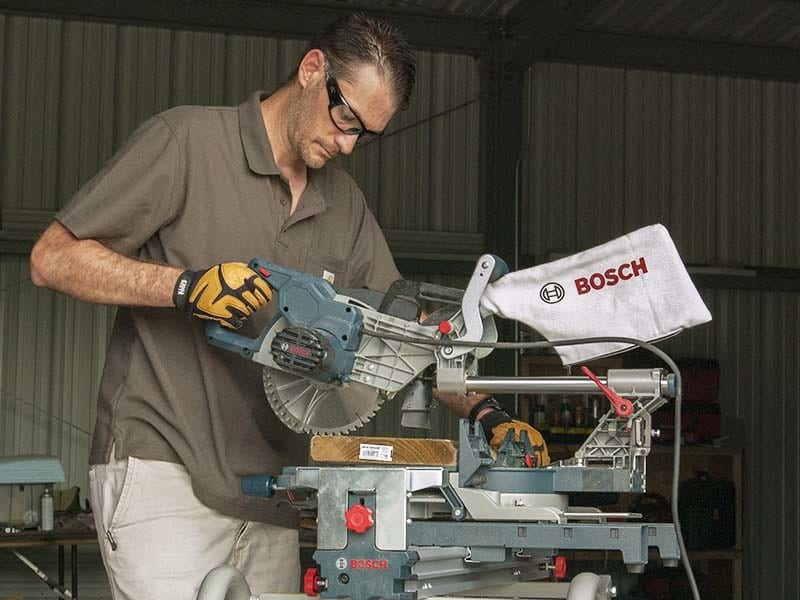
Tinted or Shaded Eye Protection (Safety Sunglasses)
Working outside? You likely want sunglasses, even on cloudy days. Aside from protection from the sun, they reduce strain on your eyes by keeping them at a more comfortable light level. As a contact lens wearer and outdoor enthusiast, I don’t step outside without shaded eye protection.
You can also have safety glass lenses tinted in the same colors you already prefer in your regular eyewear. My favorite is an orange frame with blue lenses (go Gators!). You can also go with photochromic (auto-changing) lenses, or a multiple-lens system, or simply find a style you like and grab one pair with clear lenses and another with dark lenses.
Blue Light Filters
Blue light is on the short end of the wavelength scale. High-energy visible (HEV) light is high-frequency, high-energy light in the violet/blue band from 400 to 450 nm in the visible spectrum. Blue light presumably has a number of biological effects, including those on the eye. HEV light may contribute to macular degeneration, though the jury’s out until we get more info from additional long-term studies.
In order to process Blue light, your eye tends to focus too far in front of the retina. This causes blurring and additional strain. Blue light filters, including those found in some eye protection solutions, reduce the blue wavelength. This can result in sharper and brighter vision or on-screen images.
If you find yourself indoors or frequently using a smartphone or computer, eye protection with a built-in Blue filter might make sense.
Prescription Eye Protection
Nearly any kind of eye protection can be found in a prescription format for the right price. For safety glasses, you have way more choices. When it comes to goggles, those choices drop quite a bit and costs go up.
For face shields and welding helmets, the idea is that you would wear prescription lenses underneath both. You have plenty of room within, so there’s no reason to look for a large prescription lens for either of these types of gear. One thing you can find, however, is magnifying lenses for welding helmets. These make it easier to see the material you’re working on and many welders use helmets that facilitate the easy insertion and use of these lenses.
A variety of prescription safety glasses exist and most optometrists can help you get what you need. The key is making sure you have the prescription and can also get properly fitted for the lenses.
As an alternative, depending on the requirements, you can add side shields and covers to your existing prescription glasses. While not suitable for all applications, it may prove useful for those with minimum safety requirements.
Full-Face Shield Eye Protection
For those dealing with activities and jobs that involve flying debris, a full face shield may be required (or just wise). Full-face shields protect the head, eyes, and neck from anything from shards of heated metal to accidental fragmentation of abrasive blades.
We can think of two immediate applications where this makes sense and is required.
Eye Protection While Grinding
When using an angle grinder—particularly when cutting—a full face shield is required. Using a pair of safety glasses for eye protection may cover your eyes, but it doesn’t stop a faulty or damaged abrasive cutting wheel from hitting you in the cheek (or worse) when it suddenly flies apart during a cut.
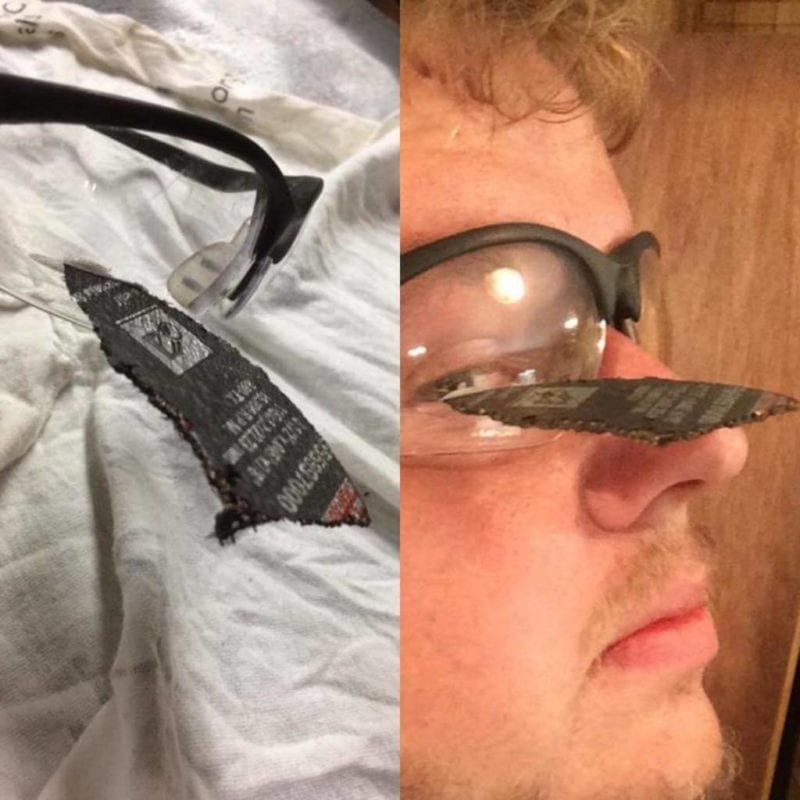
The use of a full-face shield covers the entire face, including the head, eyes, cheeks, and neck. In the event of a breaking up of the cutting wheel, or some other flying piece of debris, you get more than just eye protection. This can mean the difference between a close call and a devastating trip to the emergency room.
Eye Protection While Welding
When welding you need a lot of protective PPE. Of those, the face shield may prove the most important. Due to the intense light associated with the arcing of a welder on steel, these welding helmets include auto-dimming windows that darken almost immediately when the arcing begins.
Additionally, a welding helmet protects the entire face from sparks and small pieces of superheated debris. Welding—particularly stick welding—generates lots of splatter in the form of tiny hot pieces of steel. You definitely don’t want these in your eyes, but you also don’t want them hitting your face either.
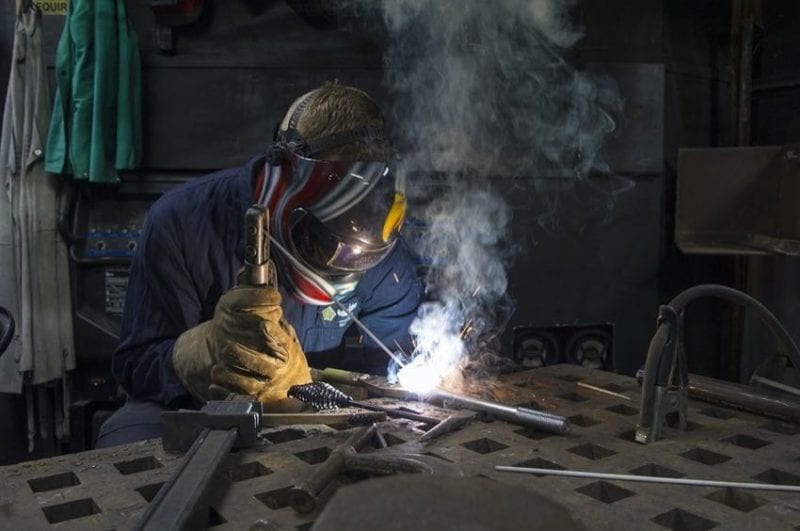
Conclusion
Safety glasses don’t have to be the ugly plastic things we used to wear at the power plant. With the requirement to provide them, many companies chose not to provide something stylish because they don’t want people walking away with them. If you chose to buy your own, first make sure what your employer’s requirements are. If it’s just ANSI 87.1-2010, then you’ll have a wide open range of options. Be sure to check out Edge Eyewear for stylish, affordable certified safety glasses.

